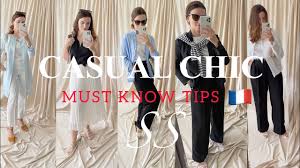Women’s clothing has evolved dramatically over centuries, chic women’s clothing shaped by cultural, political, and social influences. From the elaborate gowns of the Victorian era to the empowered, minimalist fashion of today, women’s attire reflects the changing times and their journey toward self-expression, comfort, and equality. This article delves into the rich history and dynamic transformations of women’s fashion, exploring key moments and trends that have defined how women dress.
1. Ancient and Medieval Periods: Modesty and Protection
In ancient civilizations, women’s clothing served both functional and symbolic purposes. In Egypt, Greece, and Rome, garments like linen tunics and draped fabrics were common. These pieces were often simple yet elegant, crafted from natural materials and designed to allow ease of movement in a hot climate.
As time progressed into the Medieval period, modesty became the hallmark of women’s attire. Dresses covered most of the body, with intricate layers of fabrics serving to convey a woman’s social status. Wealthier women wore gowns made from luxurious materials such as silk and velvet, often adorned with fur, gold threads, and jewels, while peasants wore simpler, more practical garments.
2. Renaissance and Baroque: The Age of Opulence
The Renaissance period heralded a dramatic shift in fashion. Women’s clothing became more elaborate, with intricate bodices, large skirts, and stiffened fabrics designed to create a silhouette that accentuated the waist and emphasized femininity. Corsets were introduced to achieve a smaller waist, though they were often uncomfortable and restrictive.
The Baroque era that followed continued the tradition of extravagant fashion. Gowns were voluminous, often featuring layers of lace, ribbons, and embroidery. The focus was on showing off one’s wealth and status, with rich fabrics such as brocade and satin becoming popular.
3. The Victorian Era: Corsets, Crinolines, and Femininity
The Victorian era (1837–1901) is often associated with restrictive clothing, including the infamous corset. Women’s clothing during this time was designed to present an idealized image of femininity—graceful, slender, and delicate. The corset was a central element of Victorian fashion, cinching the waist to create an exaggerated hourglass figure.
Large skirts, supported by crinolines or petticoats, emphasized the ideal of “womanly” proportions. While this style conveyed elegance, it also confined women to rigid, uncomfortable clothing. The Victorian era also saw the introduction of more modest, structured daywear for women, alongside grand evening gowns for formal occasions.
4. The Early 20th Century: Liberation and Change
The early 20th century marked a period of transformation, as women’s fashion began to reflect their changing roles in society. The 1910s and 1920s were pivotal decades. The corset began to fade from fashion, replaced by looser, more comfortable clothing. Designers like Coco Chanel championed the “flapper” style—a loose, drop-waist dress that symbolized women’s newfound independence.
The World Wars further accelerated change. During WWII, fabric rationing led to simpler designs, and women took on more roles outside the home, which required practical, functional clothing. The post-war period saw the rise of Christian Dior’s “New Look,” with fuller skirts and nipped-in waists that celebrated a return to femininity.
5. The 1960s and 1970s: Youth Culture and the Feminist Movement
The 1960s and 1970s were transformative decades for women’s fashion, driven by youth culture and the feminist movement. The “mod” look of the early ’60s introduced bold patterns, mini skirts, and geometric designs. Fashion icons like Twiggy popularized the androgynous, slim, and youthful look that became synonymous with the era.
The feminist movement of the 1970s further influenced women’s clothing. Women began to reject the restrictive and traditional styles of the past, opting for more practical, comfortable attire. Pantsuits became a symbol of empowerment, and the idea that women could dress for both style and function gained prominence.
6. The 1980s and 1990s: Power Dressing and Grunge
The 1980s were a time of excess and bold fashion. The concept of “power dressing” emerged, with women wearing tailored suits, shoulder pads, and high heels as a means of asserting their authority in the workplace. Designers like Giorgio Armani and Vivienne Westwood helped shape the era’s edgy, assertive style, while celebrities like Madonna popularized bold, daring looks.
In the 1990s, the grunge aesthetic made its way into mainstream fashion. The era embraced a more relaxed, rebellious style, characterized by flannel shirts, oversized sweaters, and combat boots. Simultaneously, the rise of minimalist designers like Calvin Klein and Jil Sander marked a departure from the excesses of the ’80s, favoring simplicity, clean lines, and neutral tones.
7. The 2000s to Present: Diversity, Sustainability, and Inclusivity
The 21st century has brought even greater diversity and inclusivity to women’s clothing. With the rise of global fashion brands and the influence of social media, women today are exposed to an eclectic array of styles. From athleisure to streetwear, high fashion to DIY, women’s clothing has become a reflection of individual personality and creativity.
Sustainability has become a major concern, with more designers opting for eco-friendly materials and ethical manufacturing processes. Additionally, the body positivity movement has challenged traditional standards of beauty, encouraging a more inclusive approach to fashion that celebrates all shapes, sizes, and skin tones.
Conclusion: Fashion as Empowerment
Women’s clothing has come a long way from the restrictive and uniform styles of the past. Today, fashion is not only a form of self-expression but also a tool for empowerment. Women’s fashion continues to evolve in response to shifting social, political, and cultural landscapes. From the corsets and crinolines of earlier centuries to the bold, boundary-pushing designs of today, women’s clothing tells a story of independence, confidence, and strength. The future of women’s fashion promises to be as diverse, dynamic, and transformative as the women who wear it.

